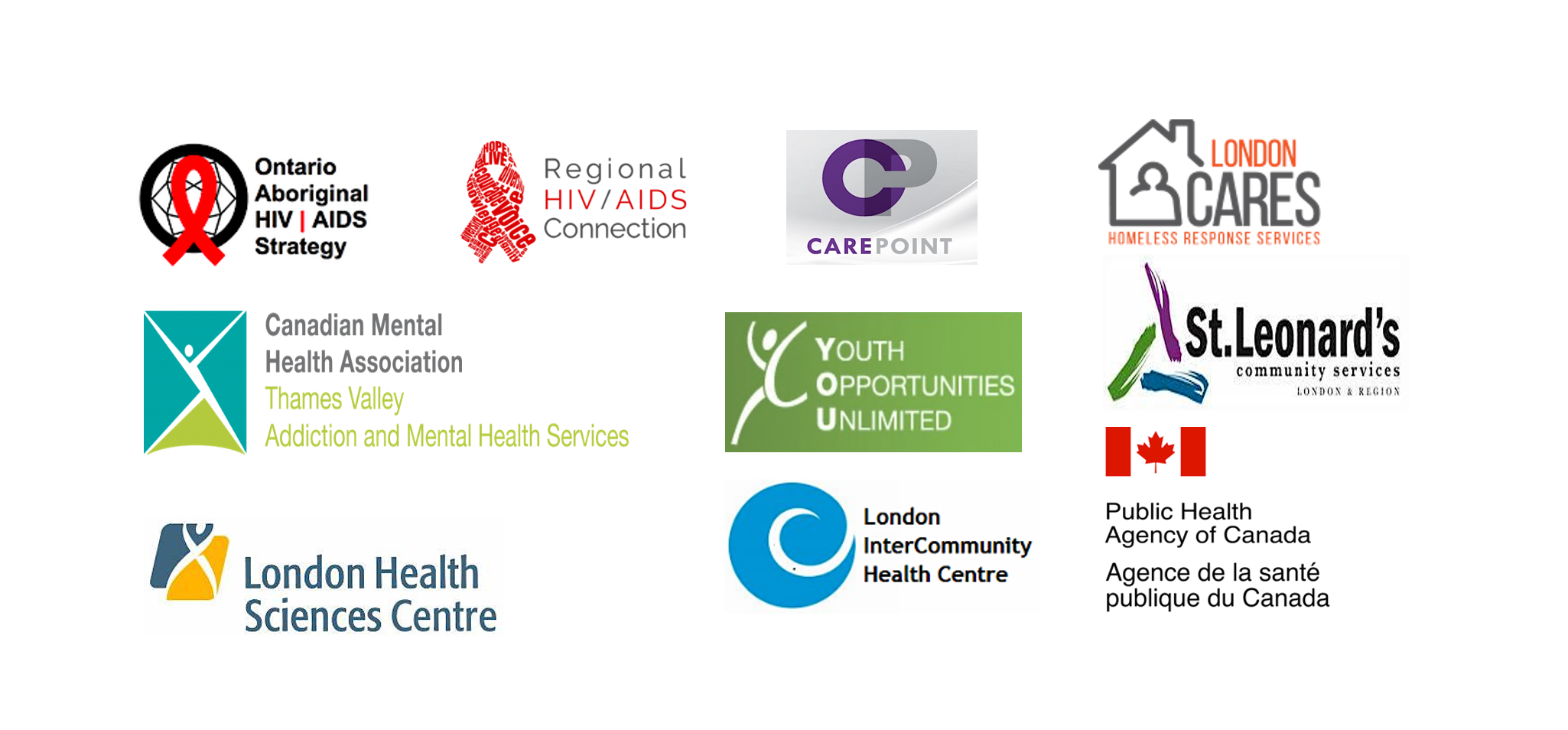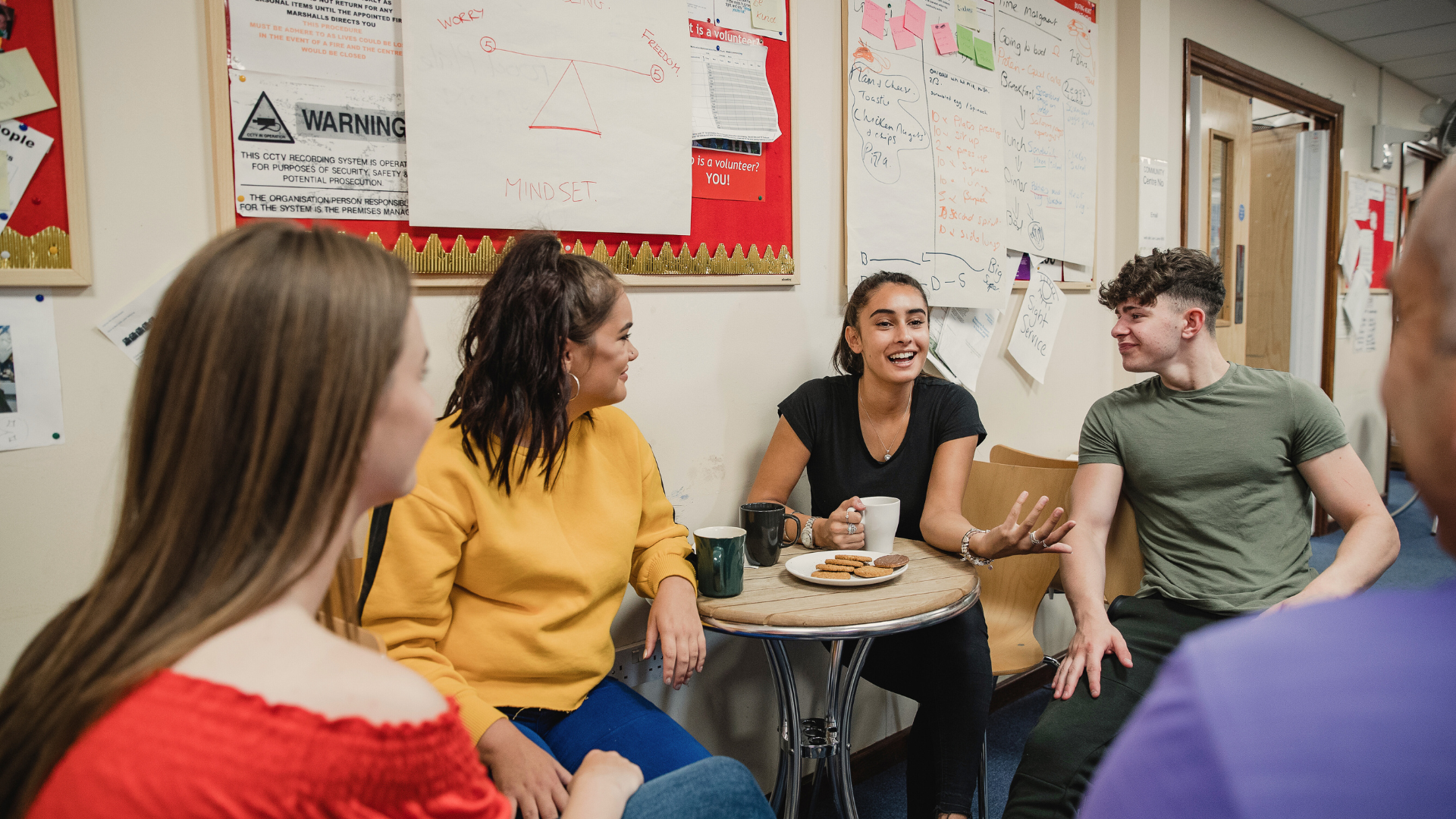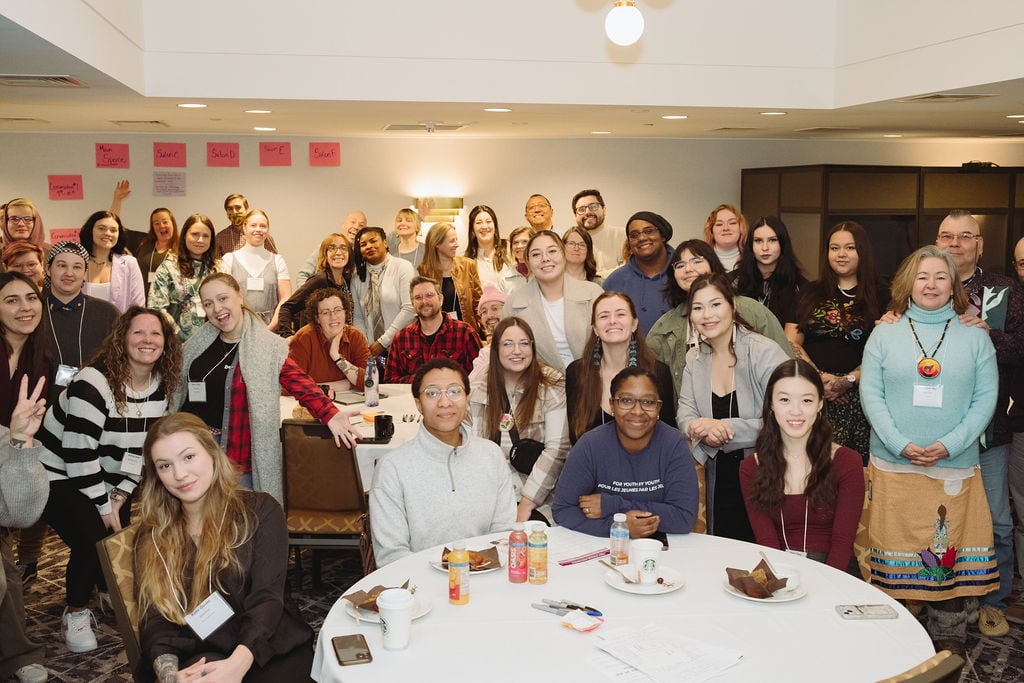The Intersectoral Fund
The Intersectoral Action Fund (ISAF) is a grants program by the Public Health Agency of Canada (PHAC), designed to bolster community capacity for intersectoral action on social determinants of health. The ISAF funds organizations addressing the societal, economic, legal, and political structures and norms that impact individuals and their behaviours. The program aims to enhance population health, reduce health inequities, and strengthen community resilience.
The 2022-23 ISAF funding cohort contained 13 projects. Each ISAF-funded project engaged diverse stakeholders – including community organizations, government agencies, local businesses, and individuals with lived experience – to collaboratively develop a common agenda and an action plan to address a pressing public health issue. This approach enabled the implementation of solutions for a range of complex health priorities while fostering long-term systemic change.
The Collective Impact (CI) Framework – a proven framework for multi-sector collaboration – served as the foundational model for ISAF projects funded between 2022-23. Each project required coordination across various sectors to tackle complex health challenges affecting health equity and well-being. The CI Framework’s five conditions – a common agenda, shared measurement, mutually reinforcing activities, continuous communication, and backbone infrastructure – facilitated the conditions for community action and implementation of meaningful intersectoral action.
Implementing innovative solutions demands creativity and courage. We commend funded projects for sharing their valuable experiences and insights for the benefit of all communities.
INTRODUCTION
Equitable access to care is a foundational principle of Canada’s health system. However, too often it is not a reality for many marginalized individuals and groups. This case study focuses on the Health Equity & Ecosystem Development Project led by the London InterCommunity Health Centre and funded by the Public Health Agency of Canada’s Intersectoral Action Fund. This project aimed to ensure greater health equity for marginalized populations by reducing harm and promoting cultural safety with health system staff, increasing their capacity and confidence to use trauma and violence-informed health care practices.
Using a highly participatory community-driven approach, the project brought together community agencies, hospital staff, and people with lived and/or living experience (PWLLE) on a collaborative learning journey. This process deepened collective understanding of the changes needed to make health care more equitable and accessible.
The project’s core partners were the London InterCommunity Health Centre and the London Health Sciences Centre (LHSC). The partners were supported by a diverse 14-member Community Advisory Committee that met monthly to provide stewardship to the project. The Committee included an array of diverse perspectives, sectors, and communities, including representatives from physical and mental health, housing, and justice sectors.
Additionally, from the outset, the project prioritized reaching individuals and communities often excluded from traditional health system engagement. Their lived experience and wisdom were foundational to identifying service gaps and barriers. When combined with the knowledge and expertise shared by community-based organizations and health care services, opportunities to change how hospital service was delivered became possible.
The project’s leadership team – hired by the London InterCommunity Health Centre – identified four key insights as they reflected on their approach, their learnings, and their results.
Insight #1 | Stigma Is Prevalent & Undermines Health Access
An important motivator for this project was the acknowledgement of the widespread stigma affecting individuals who are racialized, experiencing homelessness, and/or using substances in health care settings. These experiences affect a person’s willingness and ability to access health care. The project was realistic about what could be achieved within the year. This enabled them to focus on making progress and building momentum rather than over-reaching and letting people down. Ultimately, the project embraced a multi-pronged strategy to shift the culture that perpetuated health inequities for vulnerable populations in healthcare settings. This included:
-
Learning and deepening an understanding of what contributes to the systemic inequities faced by the above-mentioned populations;
-
Focusing on care pathways as a useful way to focus action;
-
Creating new policies and practices within the hospital that address structural violence and stigmatization, addressing the systemic inequities experienced by vulnerable populations; and
-
Providing accessible, on-site education to staff to address the lack of formal training in cultural safety and trauma-informed care, both in hospital and community health settings.
This intentional approach led to measurable progress and the formation of several strong, ongoing partnerships that will carry the work forward. Sustained commitment to policy change and staff education is essential to shift the behaviours and practices that fuel stigma and racism and create an organizational culture where everyone is able to safely and equitably access the health care they need.
Insight #2 | The Project’s Philosophy for Community-Driven Action were Foundational
Significant relationship-building and groundwork had been laid for 18 months before the project partners applied to the ISAF. This included deep dialogue to build shared understanding, identify hospital champions, and develop a shared commitment to the philosophy that the work needed to be community-led and guided by the voices and leadership of PWLLE of stigma and inequity in the health system.
This philosophy shaped every aspect of the project. The leadership team approached the work with curiosity, humility, and a commitment to learning. They shared a belief that every interested party – especially those with lived experience – brought essential knowledge that was needed to deepen the partners’ collective understanding of the issue. Relationship-building was not an add-on; it was understood as central to the project's success.
Equally central to the project’s design was a deep respect for – and commitment to – individuals with lived and living experience. Their leadership and participation were not symbolic – they were foundational to how services were designed and implemented. To honour their contributions, the project paid Advisory Committee members with lived/living experience a living wage in cash, offering them dignity and the flexibility to spend their money any way they needed. The project also provided bus tickets and honorariums to community participants and interviewees for their participation as well. The project budget also included funding to provide community participants and interviewees with bus tickets and honorariums for their participation as well. This funding modelled and reinforced the relationship of respect and importance the project placed on community knowledge.
One project team member, in particular, brought long-standing relationships and a history of trust among individuals with lived and living experience of homelessness or substance use. Her presence helped to engage a diverse range of partners who felt more confident and hopeful that the project could deliver real change.
Insight #3 | Learning Is Action
This project invested considerable time reviewing data and research to gather information and learn about promising practices and policies developed in other jurisdictions. This included undertaking an extensive literature review and hosting 10 meetings with Canadian hospitals and health authorities to deepen understanding about various approaches to advance harm reduction practices in hospital and community settings.
The team’s learning from external sources was complemented by an equally in-depth knowledge and data gathering process from within London’s health system and the broader local community. The scope and diversity of this learning was truly comprehensive and included:
-
162 engagements with patients, community & hospital staff;
-
Guided interviews with leadership and front-line staff at the hospital and 28 community agencies (all anonymous);
-
134 engagements with folks with lived and living experience; and
-
Monthly meetings with the project’s Community Advisory Committee.
The guided interviews with staff provided substantial information about their perspectives, needs, and barriers to providing trauma and violence-informed care. The interviews also built awareness among various partner organizations of the inequities experienced by vulnerable people in the community attempting to access care. Similarly, the stories shared by individuals with lived and living experience were enlightening and helped identify patterns and contributors of negative experiences in the health system, revealing areas for focused attention and action.
Additionally, a project team member kept personal journals documenting her experiences helping clients and families to navigate the health system. Initially, these journals helped her personally cope with the emotional toll of witnessing inequity – and enabled her to remain grounded and professional. In fact, she now recommends reflective journaling as a best practice for others in similar roles. At the same time, the journals also became a valuable project asset that helped reveal recurring patterns and systemic barriers in health care access. They were shared with a few members of the project team who found them invaluable in identifying themes and patterns that perpetuated inequity.
Insight #4 | Success Requires Relationships
The most critical ingredient in this project’s success was the intentional focus on building and sustaining relationships – a value embedded in every aspect of the work. As described in earlier insights, the project was grounded in curiosity, humility, and a desire to understand multiple perspectives.
Relationship-building and cross-sector collaboration formed the project’s foundation from the beginning. A total of 28 community agencies actively supported the work by facilitating connections with clients, offering meeting spaces, and championing the project’s goals. The LHSC, a key anchor partner, exemplified a spirit of collaboration by offering dedicated space for the project, integrating the project team as part of their own staff team, and demonstrating a strong collaborative spirit. The fact that partnerships between the hospital and health centre had been developing for 18 months before the project’s launch was a huge asset that enabled the team to quickly engage the right people – i.e., those with the understanding, commitment, and influence needed to make change happen across communities.
The project leaders knew that modelling the value and practice of leading relational care – a core principle of trauma and violence-informed practice – was essential to achieving the project's ultimate outcomes and success. This meant ensuring that everyone involved experienced first-hand the types of interactions and relationships the project was working to foster throughout the hospital and community health systems. This required the project team to engage the following skills:
-
Ability to authentically engage – The project team was skilled and knowledgeable about how to design and implement a strategy to engage a diversity of stakeholders to provide input and co-create effective solutions.
-
Engaging with compassion and kindness – This included an appreciation for how overwhelming and distressing it can be for care providers to be frequently faced with high needs situations, with no access to additional supports to address them.
-
Holding empathy – An understanding that this project involved challenging people's professional competencies while at the same time recognizing that most lacked training and education in how to provide trauma and violence-informed care.
-
Creating safe spaces – The project team relied on strong facilitation skills and the ability to be upfront and honest about the topics and tensions that might arise, and establish how these would be navigated.
These skills enabled the project team to be very deliberate and intentional about working with staff because how people were approached was so important in creating curiosity and an openness to learning. When staff felt seen, supported, and not judged, they were far more willing to engage – and many expressed genuine interest and a commitment to transforming policies and practices to better serve vulnerable populations. The power of this project lay not just in what it did, but in how it did it. Relationships were the strategy, relational care was the practice, and change was the outcome.
Project Results & Impact
The Health Equity and Ecosystem Development Project laid a strong foundation for deeper collaboration between the LHSC and intersectoral community agencies, while also co-creating a platform to share and collaborate on care planning for marginalized individuals. The project generated several tangible, system-level outcomes, including:
-
Creation and expansion of an Office of Inclusion and Social Accountability (OISA) at LHSC, which now reports directly to the Office of the President and CEO;
-
Executive approval of a Hospital Review Framework to help leaders review and/or develop policies and procedures using a trauma- and violence-informed lens, alongside harm reduction and cultural safety principles;
-
A commitment to share primary care records with hospital care teams, enabling more coordinated care and better patient outcomes;
-
Establishing an Engagement Worker position to better support coordinated care planning between the hospital and community agencies;
-
Review of 30 hospital policies and two practice documents by project partners – including the Community Advisory Committee – to incorporate a lens of harm reduction, trauma and violence-informed care, and cultural safety;
-
Introduction of a Roving Cart initiative, which engaged 261 frontline hospital staff with practical information and tools on trauma- and violence-informed care and harm reduction;
-
Development of a micro-learning series for hospital leadership on trauma-informed care, harm reduction, and cultural safety;
-
Launch of the Health Card Pathway Initiative, designed to understand and improve how patients without valid health cards are identified and supported, in collaboration with Ontario’s Office of the Registrar General; and
-
Documentation of a replicable engagement and recruitment methodology, allowing others to adapt and implement this community-led approach.
This project not only raised awareness but also produced concrete shifts in policies, practices, and relationships. It fostered a shared commitment across sectors to advance trauma- and violence-informed care, harm reduction, and cultural safety – practices essential for dismantling systemic barriers and reducing the inequities faced by marginalized people seeking care. By embedding equity into systems and relationships, this project advanced meaningful, measurable change.
Conclusion
Perhaps the greatest achievement of this project is the diverse, committed network of partners it brought together – partners who are eager to maintain the relationships, learning, and momentum sparked by this work.
There is shared pride among project partners in seeing trauma and violence-informed care and harm reduction practices beginning to take root in the LHSC. At the same time, one of the project’s key takeaways is the need for continued support to help staff “connect the dots” – i.e., linking these approaches to everyday practice and feeling confident to speak up in the face of inequitable treatment or systemic harm.
The project team is encouraged by the interest in the project’s outcomes and the resources it has developed. Other system partners are now reaching out to the project leads, curious about how they might adapt the project’s approaches, tools, and lessons to their own contexts.
There is a shared recognition that ongoing resources will be essential to build on and continue to grow the project’s momentum. Partners are committed to identifying what is needed to sustain and grow this work – and to secure the necessary resources to do so effectively.
Most importantly, the trusted relationships established through this project are an enduring legacy. Even as the formal project concludes, the people and organizations involved have pledged to continue collaborating, learning, and pushing for change – together.
Acknowledgements
The Health Equity and Ecosystem Development project would like to thank the leadership, staff and volunteers of the following organizations for their partnership and contributions to this project.

















